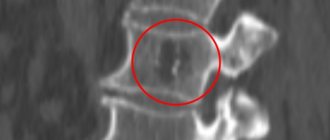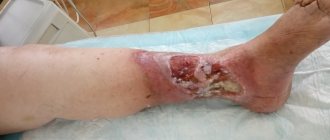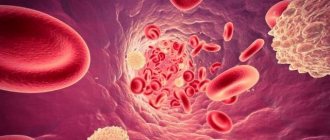Leukopenia is a pathological condition that is characterized by a decrease in leukocytes in the blood (less than 4 x 109/l), including all cells of the leukocyte formula (neutrophils, monocytes, lymphocytes, basophils). Such changes may be reactive, or may be indicators of a malfunction of the bone marrow, which produces white blood cells.
This condition is caused by massive destruction of young blood cells and a decrease in the formation of mature leukocytes, which are the basis for the proper functioning of the immune system.
| Leukocytes are protective blood cells that are an integral part of the immune system. They “destroy” foreign elements, produce biologically active substances, and take part in inflammatory processes. · Therefore, an imbalance of leukocytes leads to a decrease in the body’s defenses, thereby increasing its vulnerability to various types of infections. The severity of the pathological process depends on the rate of reduction of leukocytes in the blood. |
In some clinically healthy people, leukopenia is considered normal.
However, in most cases, a decrease in leukocytes is a pathological condition that develops against the background of primary or secondary causes.
By origin they are:
- Endogenous (hormonal imbalance, inflammatory process in the body, genetic predisposition).
- Exogenous (bacteria, viruses, fungi, parasites).
Infectious and non-infectious.
Causes of the disease
The causes of leukopenia may be due to:
Diseases of blood cells (bone marrow)
- Myelofibrosis;
- Aplastic anemia;
- Enlarged spleen;
- Myelodysplastic syndrome.
Congenital pathologies
- Kostman's syndrome;
- Myelocathexis;
- Kidney failure;
- Itsenko-Cushing syndrome;
- Gensler's syndrome.
Infectious diseases
- ARVI;
- Hepatitis;
- Rubella;
- Tuberculosis;
- HIV.
Purulent pathologies
- Endometritis;
- Cholangitis;
- Sepsis;
- Lung abscess.
Autoimmune disorders
- Allergy;
- Lupus erythematosus;
- Rheumatoid arthritis;
- Thyroiditis;
- Sarcoidosis.
Deficiency of the vitamin-mineral complex
- B vitamins (especially B2, B6, B9 and B12);
- Copper;
- Zinc.
Taking medications
- Cyclosporine;
- Interferon;
- Minocycline;
- Penicillin.
Oncological pathologies and methods of their treatment
- Blood cancer;
- Chemotherapy;
- Radiation therapy;
- Bone marrow transplantation.
Redistribution of leukocytes
- Shock conditions;
- Hard physical labor.
During the process of redistribution, leukocytes temporarily “leave” the bloodstream, switching to the kidneys, lungs, and capillaries.
Prolonged contact with chemicals, radiation, viral infections, hereditary factors can also negatively affect the level of leukocytes in the blood.
Leukopenia in children usually manifests itself against the background of viral infections (acute respiratory infections, influenza, measles, chicken pox), taking certain medications (interferon, antibiotics, antihistamines) or a poor diet (lack of protein, folic acid, zinc).
At the same time, a critical decrease in leukocytes (below 1.5x 109/l) is a reason for an urgent and comprehensive examination.
According to the severity of leukopenia, they are distinguished:
- Mild degree - 1.5x 109/l;
- Leukopenia 2 degrees - 0.5-1 x 109/l;
- Severe leukopenia (agranulocytosis) – less than 0.5x 109/l.
Acute agranulocytosis in children usually indicates a dangerous change in the functioning of the bone marrow.
The World Health Organization adopted the 10th revision of the International Classification of Diseases (ICD) as a single regulatory document, according to which leukopenia was assigned code D72.8.0.
Classification
As already mentioned, one type of syndrome is physiological. It occurs quite rarely, in approximately no more than 10 percent of people.
These people do not experience any inconvenience, their immunity is not reduced, and there are no health complaints.
But if the syndrome arose due to any disease, it is already a pathological syndrome.
In a small proportion of the population, the syndrome is hereditary rather than acquired.
In rare cases, an insufficient number of white blood cells is the result of their movement into the vessels. In this case, redistribution syndrome is diagnosed. When the number of leukocytes decreases throughout the bloodstream, a true syndrome is diagnosed.
Neutropenia is the most common type of syndrome. There are several stages:
- Light stage: from 1000 to 1500 neutrophils (one of the types of leukocytes) in 1 μl of blood;
- Moderate stage: from 500 to 1000 in 1 µl;
- Severe stage: less than 500 µl in 1 ml.
The syndrome can be acute or chronic. Acute lasts from several hours to several days. The syndrome is chronic and can last up to several years.
Symptoms
Leukopenia, as a rule, is determined accidentally during a preventive study, since it does not have specific clinical symptoms.
The first signs of a decrease in leukocytes may appear when bacterial, viral or infectious complications are involved in the pathological process.
What this entails:
- Increased body temperature;
- The appearance of aphthae on the mucous membranes of the mouth;
- Increased gum bleeding;
- Pustular infections;
- Tachycardia;
- Headache;
- Anxiety;
- Pain in the left hypochondrium (associated with an enlarged spleen).
All symptoms of leukopenia must be carefully examined, so in this case, consultation with a doctor is mandatory.
Leukopenia and agranulocytosis
The proportion of leukopenic conditions among other diseases of the blood system is quite large. Statistical data indicate an increase in the number of patients with severe leukopenia in recent years. Often the development of this pathology is in some connection with the use of new bacteriostatic agents in medical practice, with exposure to ionizing radiation, as well as with an increase in episodes of allergic diseases. In assessing leukopenic conditions, the doctor should avoid two opposing trends: in some cases, there is no due attention to leukopenia, which is the beginning of a severe pathology of the blood system, and the necessary preventive and therapeutic measures are not taken; in others, any decrease in the number of leukocytes is regarded as a symptom of a severe pathology with unfounded the use of potent leukopoietic drugs (drugs that enhance the intensity of the formation of these blood cells). Therefore, to correctly assess the significance of “individual” leukopenia, it is necessary, if possible, to find out its causes and mechanism of development, since only such a solution to the issue ensures the success of treatment and preventive measures in each individual case. Leukopenias are often combined with a significant decrease in the number of neutrophils in the peripheral blood, therefore, in essence they are neutropenia or granulocytopenia (respectively, a decrease in the number of neutrophils and granulocytes).
The causes of granulocytopenia, with all their diversity, are divided into exogenous (acting from the outside), endogenous (arising in the body itself) and hereditary. The first group of factors includes some substances that have a toxic effect, such as benzene, toluene, arsenic, mercury; some medications; radiation; infectious diseases.
Endogenous causes of neutropenia may be a violation of the endocrine regulation of granulocytopoiesis, i.e., the formation of granulocytes (thyrotoxicosis, adrenal insufficiency, dysfunction of the pituitary gland), increased spleen function, allergic conditions.
The listed leukopenias are classified as functional. But leukopenia and neutropenia can be a manifestation of a violation of bone marrow hematopoiesis in systemic blood pathologies: acute leukemia, hypo- and aplastic conditions. In some cases, it is not possible to identify the causative factor leading to the development of granulocytopenia. Recently, there are fewer and fewer such forms.
In recent years, a special group of hereditary neutropenias (constant and periodic neutropenias) has been identified. In addition, leukopenia can be symptomatic in the form of an unstable hematological sign in some diseases.
Moderate asymptomatic leukopenia without any clinical manifestations are discovered by chance and are one of the secondary and optional symptoms of various diseases. They are characterized by a moderate decrease in the number of leukocytes (up to 3.0-4.0 H 109/l) and mild granulocytopenia (40-60% of the total number of neutrophils). The functional properties of leukocytes are not changed. Myelopoiesis is not impaired. Bone marrow is normal. There are also no changes in the formation of red blood cells and platelets. Such leuko- and neutropenia are most often purely symptomatic, accompanying a number of diseases not related to the blood system (thyrotoxicosis, gastritis, enterocolitis, cholecystitis, and many others).
How to treat leukopenia
Before starting treatment for leukopenia, it is necessary to conduct a comprehensive medical diagnosis, determine the type of leukopenia (neutropenia, lymphopenia, eosinopenia, monocytopenia, agranulocytosis) and the cause of its occurrence. Since any therapeutic effect should always be aimed at eliminating the root cause of a particular disorder.
| For the most accurate and reliable result, it is recommended to undergo a repeat blood test after some time. |
Moreover, not every decrease in leukocytes requires therapeutic intervention; it all depends on the volume and severity of the pathological process.
The Spizhenko Clinic conducts:
- Determining the cause of leukopenia and therapeutic correction if necessary.
- Bone marrow transplantation.
In case of severe oncological processes of the blood system, stem cell transplantation is performed.
- Splenectomy.
In the absence of a positive result in the treatment of autoimmune leukopenia.
Why does the syndrome appear in a cancer patient?
The causes of the syndrome in cancer are various. Here are some of them:
- Metastasis of atypical cells to the bone marrow. In this case, cancer cells displace healthy tissue. As a result, the process of formation of blood cells is disrupted.
- Autoimmunity. The immune system acts on its own leukocytes, and they are rapidly destroyed
- Cytostatic effect. The target of chemotherapy drugs is not only atypical cells, but also some healthy tissues.
- Consequences of radiation therapy.
The danger of the syndrome is that a reduction in the number of leukocytes reduces the body’s defenses and increases its susceptibility to various types of infectious invasions.
Reasons for a decrease in the level of leukocytes in the blood after chemotherapy
It should be borne in mind that leukopenia is a polyetiological syndrome, which can be a primary condition or a complication of other ailments. Among the main possible causes of leukopenia are:
- The problem of congenital genetic defect.
- Myelotoxic leukopenia, which is provoked by taking chemotherapy drugs used to treat oncology, also in the case of a systemic oncological process developing in the human body.
- Tumor lesion of the bone marrow.
- Disturbance of the body's metabolic processes.
- Infectious damage to the body - with rubella virus, cytomegalovirus infection, Epstein-Barr virus, hepatitis, etc.
- For various forms of tuberculosis.
- The effect of drugs for the treatment of diseases of various organs and systems of our body.
- When the patient works with chemicals for a long time.
Why is it important to know about the leukocyte formula?
There is a so-called leukocyte formula, which is formed from subtypes of leukocytes: monocytes, eosinophils, basophils, lymphocytes and neutrophils.
Each species performs its own specific function, although it is based on immune processes.
When we receive the results of a clinical blood test, the level of leukocytes in it may be normal, but it is impossible to say offhand what part of this total indicator is this or that subtype. At the same time, this is very important for planning systemic treatment. That is why oncologists require that blood tests indicate the absolute number of all subtypes of leukocytes. The patient should also pay attention to this when receiving test results.
Neutrophils are of greatest interest to chemotherapists. This subtype of leukocytes plays a very important role in protecting the body from bacterial and fungal infections and a relatively lesser role in protecting against viral infections. Neutrophils play virtually no role in antitumor or anthelmintic defense; other cells participate in these processes.
During chemotherapy, the level of neutrophils is a critically important indicator. If the number of neutrophils falls below 0.5x10*9/l, then normal microflora, which is present, for example, in the mouth or intestines, can cause infections. If the count is reduced to <0.2 x 10*9/L, the inflammatory response may be suppressed and the usual signs of inflammation - leukocytosis or white blood cells in the urine or at the site of infection - may not be observed. Acute severe neutropenia, especially in the presence of another factor (for example, cancer and the fact of anticancer treatment), significantly impairs the function of the immune system and can lead to the development of fulminant fatal infections. The integrity of the skin and mucous membranes, blood supply to tissues, and the patient's nutrition also influence the risk of developing infections.
If chemotherapy is carried out, despite the low level of leukocytes in general and neutrophils in particular, this will lead to complete inhibition of the functioning of the bone marrow, in which our blood cells are formed and mature. This guarantees the development of all sorts of complications, which will have to be fought long and hard with a 50/50 chance of success. Therefore, it is better to postpone treatment for a week to allow the body to recover on its own, than to carry out a cycle and then return to therapy in a month at best.
In the treatment of breast cancer, gastrointestinal tract, oncogynecological diseases, lung cancer and other tumors, various combinations of drugs are used that have varying degrees of toxicity.
Therefore, in each individual case, the attending physician makes a decision on the safety of carrying out the next cycle of chemotherapy individually based on the current situation.
You should not demand or persuade the attending physician to carry out treatment, despite poor blood test results. In this case, the doctor does not want to make you worse, but he realistically assesses the risks and tries to protect you from them.
Treatment of leukopenia during chemotherapy at the Vitamed clinic
In case of severe leukopenia, a comprehensive, attentive approach to treatment is required, combining a set of appropriate actions:
- Treatment of the underlying disease that caused the problem of leukopenia.
- Maintaining sterile and comfortable conditions for the patient.
- Determining the appropriate course of hormonal therapy.
- Developing a diet, making adjustments to the usual diet.
- Measures to prevent infectious complications.
- Stimulation of leukopoiesis.
For the patient, the Vitamed clinic offers a comprehensive approach aimed at accurately diagnosing and solving the problem. The necessary conditions are created for the patient to prevent infectious complications, simultaneously eliminating the root cause of the pathology.
9-20
Recommendations for patients with leukopenia after chemotherapy
The key secret in the successful fight against any disease is the coordinated work of the patient and the oncologist. Their joint efforts will make it possible to successfully fight the disease. To do this, it is important to know and follow the recommendations of your doctor. The correct diet deserves special attention - it is determined individually for the patient, in order to stimulate the production of leukocytes. Also, the Vitamed clinic will establish recommendations on lifestyle, taking into account possible symptoms of the problem and other procedures that have proven their effectiveness in practice.
What is recommended for patients who have developed this complication?
1) If your body temperature rises, immediately take a blood test. Inform your doctor about the results of the test.
If there is a critically low level of leukocytes and neutrophils, the next administration of chemotherapy will be postponed until complete recovery.
2) Try to stick to a complete diet, exclude raw foods (that is, meat, fish, eggs, fruits and vegetables) - all foods, without exception, must be thermally processed.
3) Follow a work and rest schedule, do not overload yourself, give your body the opportunity to replenish its strength and energy for a speedy recovery.
4) Maintain personal hygiene carefully, because any infection can cause the condition to worsen.
5) Do not visit crowded places unless necessary. Maintain self-isolation. This is relevant not only during the current pandemic, because the risks of infections during febrile neutropenia are enormous - even your household can pose a danger, let alone a large number of strangers, for example, in stores.
6) If you are forced to visit a place with a large number of people, for example, to take a blood test, then be sure to wear a protective mask. Try to keep your distance from others.
The main drugs used in the treatment of febrile netropenia include antibiotics; specialized drugs are also used to stimulate an increase in the level of leukocytes and neutrophils - these are colony-stimulating factors (G-CSF).
These drugs are used to accelerate the formation, maturation and release of neutrophils from the bone marrow into the peripheral blood, where they begin to perform their functions and protect the body.









